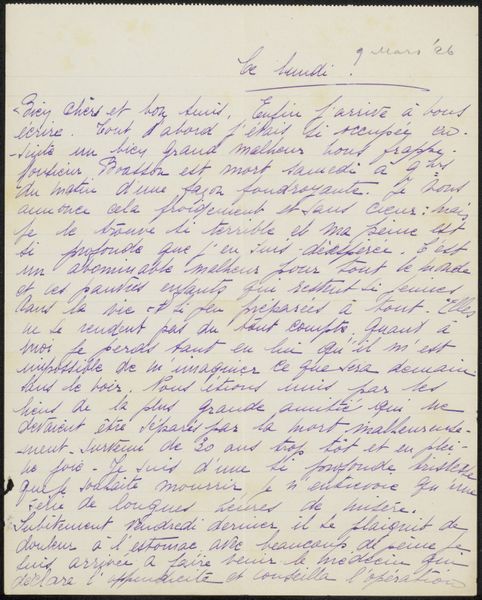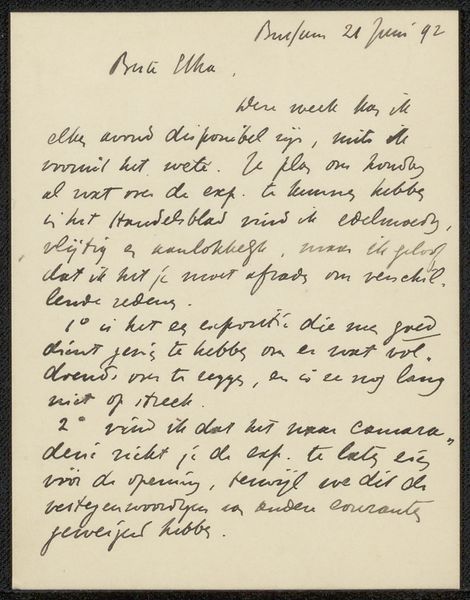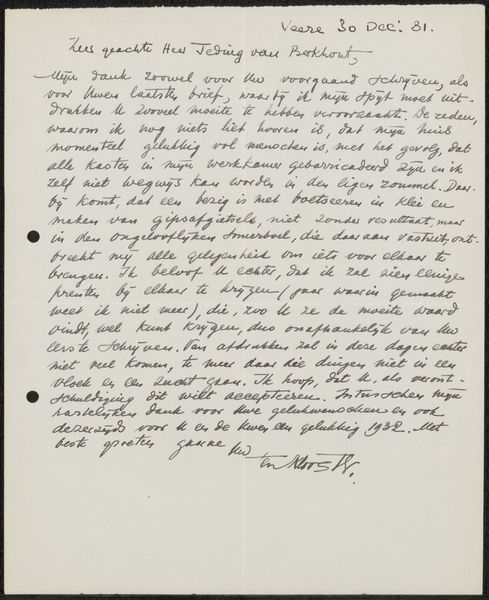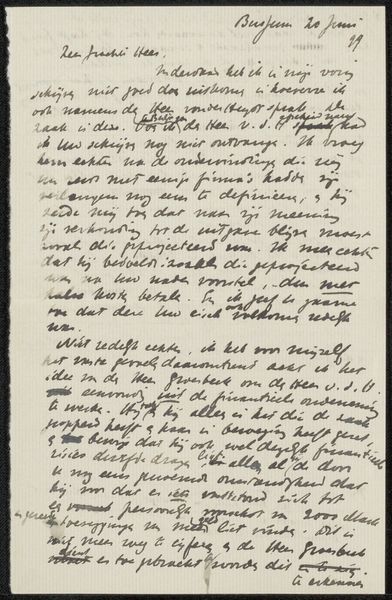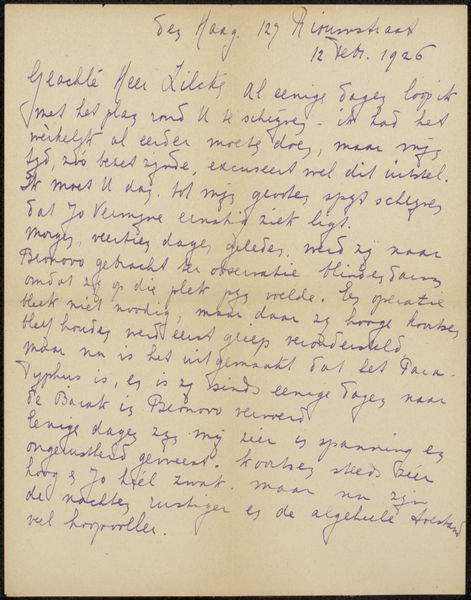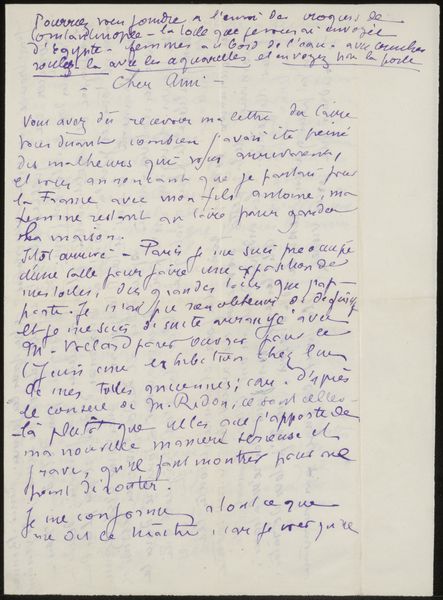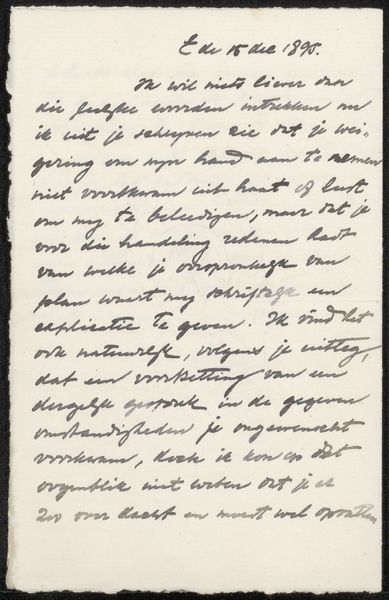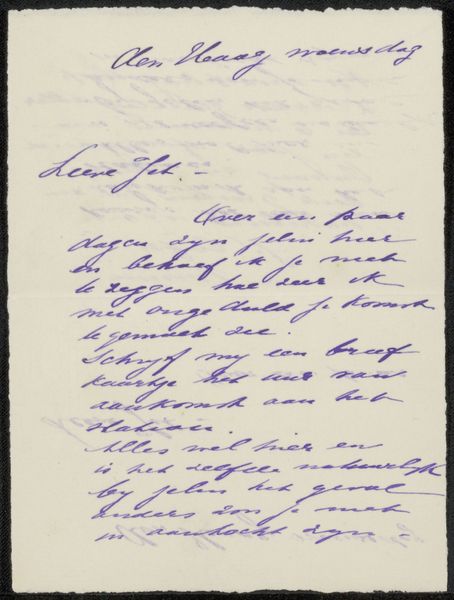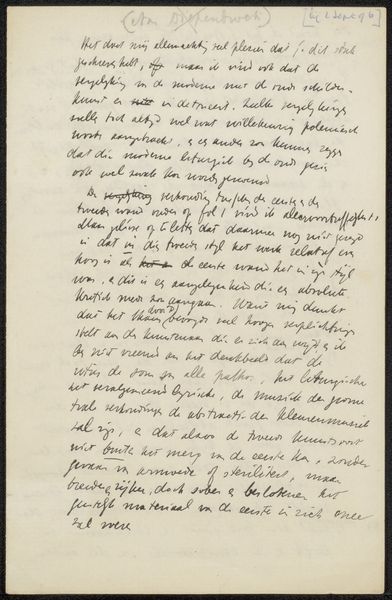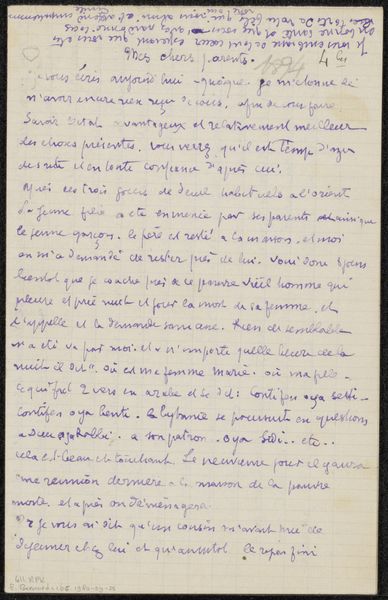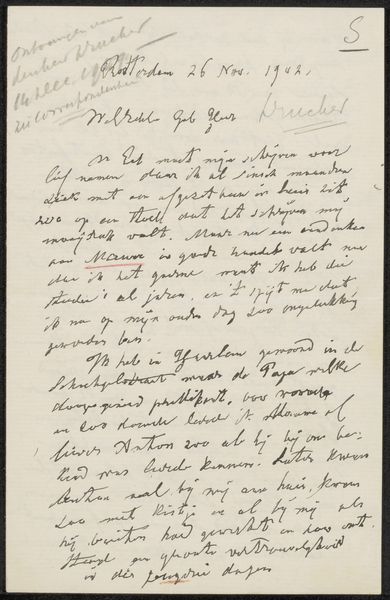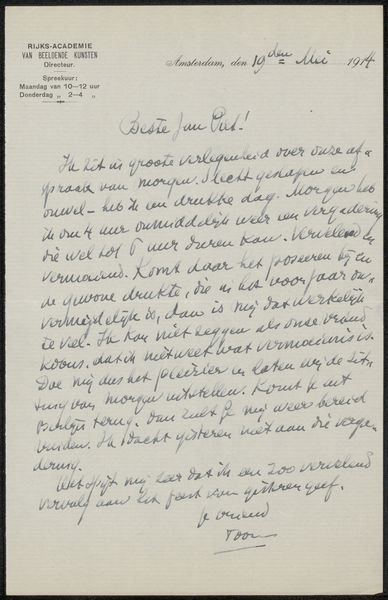
drawing, paper, ink, pen
#
drawing
#
hand-lettering
#
hand drawn type
#
hand lettering
#
paper
#
personal sketchbook
#
ink
#
hand-drawn typeface
#
ink drawing experimentation
#
pen-ink sketch
#
pen work
#
sketchbook drawing
#
pen
#
sketchbook art
#
calligraphy
Copyright: Rijks Museum: Open Domain
Curator: This is "Brief aan Etha Fles" – "Letter to Etha Fles" – potentially from 1889, a piece by Jan Veth housed in the Rijksmuseum. It's an ink drawing on paper. Editor: It has a kind of frenetic energy, all this looping handwriting crammed onto the page. A very intimate artifact. Curator: Indeed. The letter offers a peek into Veth's creative process, or, more accurately, his inner monologue and relationships. You see, this is an instance where we are drawn into the epistolary habits of the artist within a period of change. We might consider what access to his personal letters tells us about both Veth and how men's artistry was encouraged or praised in his cultural context. Editor: I’m really struck by the physicality of it. You can practically feel the pen scratching across the paper. The ink bleeds in places, and you get a real sense of the pressure he applied as he wrote. How do we interpret it? Does this say something to the labor inherent in this type of visual work? I do find this interesting when examining material culture of the late 19th century. Curator: It really highlights how personal his art making was. What I find fascinating is thinking about it intersectionally – considering gender, class, and artistic license at this specific moment in history. It's a way to connect with this work on a deeply human level. Editor: Looking closely, I’m thinking about the craft aspect here. Was Veth conscious of how this would one day become art displayed for public consumption? Or do we cheapen its impact when the means of production and inscription remain veiled? Curator: I suppose what draws me in is how the text functions as a mirror. It’s as if the sketch itself acts as a tool for contemplation. It pushes one to ask fundamental questions around identity. Editor: Well, seeing this pushes me to think about materiality itself and our impulse as viewers to decode and interpret a material that was intended for one recipient. I feel I'm leaving with more questions. Curator: I appreciate thinking more critically about access, which leads us to greater societal consideration regarding who makes art, who it's made for, and how it circulates through the culture industries.
Comments
No comments
Be the first to comment and join the conversation on the ultimate creative platform.
